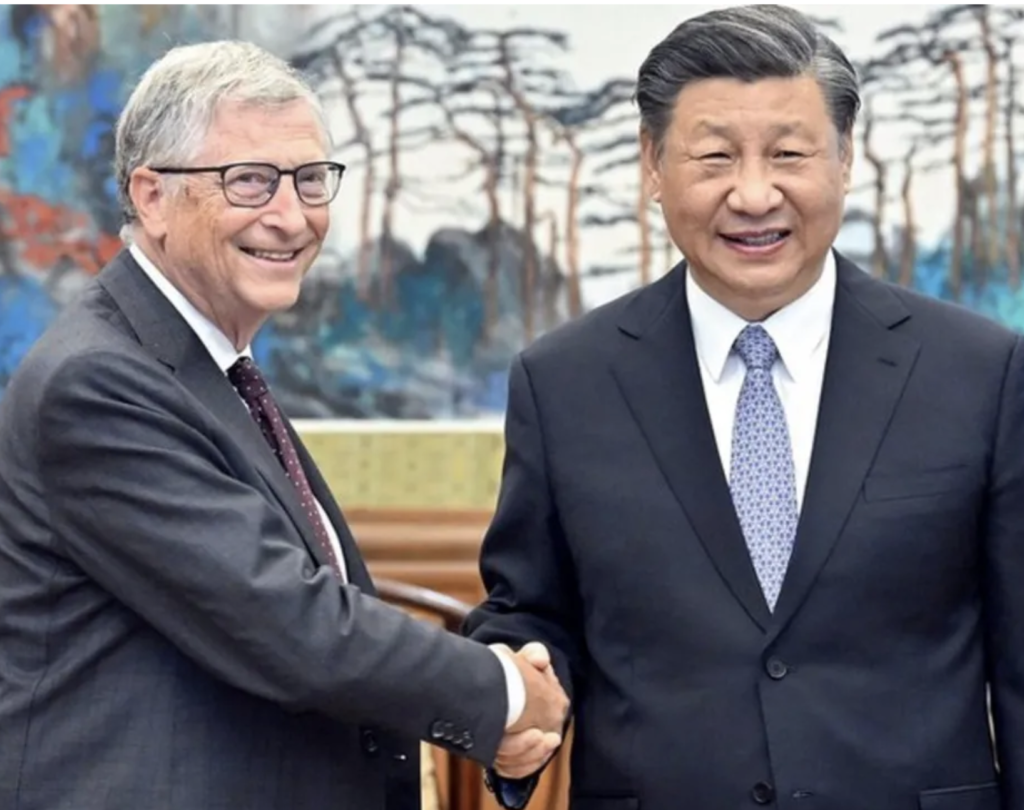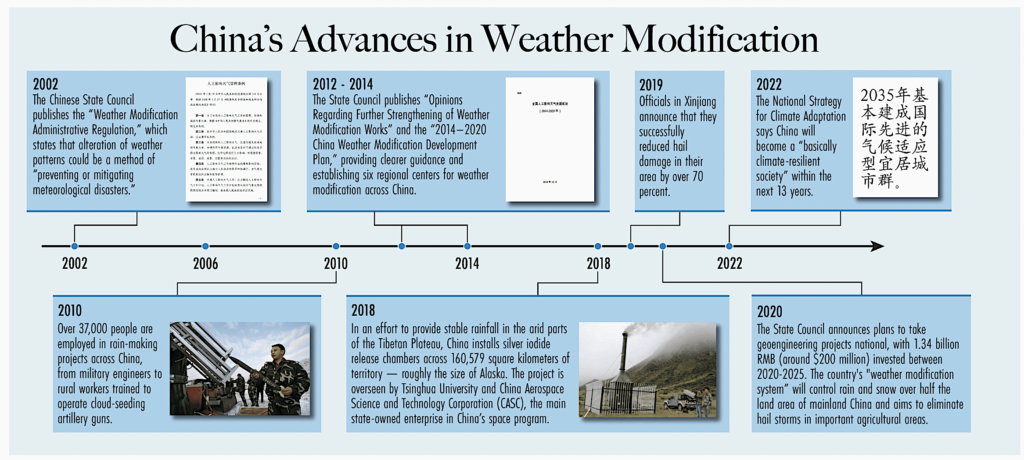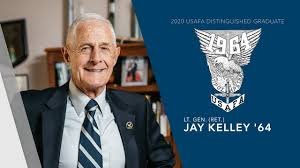Skymet Weather’s AVM GP Sharma Offers Expert Insight on Cloud Seeding: Understanding the Risks and Benefits of Man-Made Rain
Air Vice Marshal (Retd.) GP Sharma, President of Meteorology & Climate Change at Skymet Weather Services, provides a crucial and balanced overview of cloud seeding in a new video recently posted by @PTI_News on X (formerly Twitter). Released on September 25, 2025, the 2:44-minute segment addresses the timely debate around artificial rain trials, particularly in the context of recent announcements in Delhi.
In a clear and concise studio interview with Press Trust of India (PTI), AVM Sharma, a distinguished meteorologist, dissects the complexities of cloud seeding. The video, presented in a straightforward talking-head format, aims to educate a general audience, offering an expert’s perspective on the science behind artificial rain, its potential applications, and crucial caveats.
Sharma begins by defining cloud seeding as “artificial rain,” detailing its application for specific needs such as agricultural drought relief or mitigating urban air pollution. He elucidates the core mechanism, explaining how chemicals sprayed into moisture-laden clouds act as catalysts, accelerating the natural process of “collision and coalescence” to form rain.
However, AVM Sharma strongly emphasizes the process’s inherent complexities and limitations. He stresses that cloud seeding is not a guaranteed solution, requiring specific atmospheric parameters and offering only a modest 5-15% increase in precipitation under ideal conditions. Critically, Sharma dedicates significant attention to the long-term environmental concerns, warning that the chemicals involved can be “harmful,” potentially contaminating soil and water and posing risks that “outweigh benefits” over time, urging careful consideration.

“While cloud seeding offers tempting short-term solutions for issues like drought or pollution, it’s imperative to understand that it’s a complex process with significant limitations and, crucially, long-term environmental concerns,” states AVM Sharma in the video. “It’s not a magic bullet, and a balanced, evidence-based approach is essential before widespread implementation.”
VIDEO | Noida: “Cloud seeding, also called artificial rain, helps improve clouds' ability to rain by chemical spraying. There can be many reasons for doing it- agriculture, pollution and others. It’s a complex process,” says AVM GP Sharma, President of Skymet Weather.
— Press Trust of India (@PTI_News) September 25, 2025
(Full… pic.twitter.com/vYRsUysjmf
About AVM (Retd.) GP Sharma: Air Vice Marshal (Retd.) GP Sharma is a distinguished meteorologist and the President of Meteorology & Climate Change at Skymet Weather Services, renowned for his extensive expertise in atmospheric sciences. He brings decades of experience from the Indian Air Force and commercial meteorology to the forefront of climate discussions.
About Skymet Weather Services: Skymet Weather Services is India’s leading private weather forecasting and agriculture risk solutions company. It provides critical weather intelligence and advisory services across various sectors, helping businesses and communities make informed decisions regarding weather-related challenges.
The opposition party is calling it a wasteful expenditure of money.
दिल्ली में cloud seeding (कृत्रिम वर्षा) करवाने के लिए @ArvindKejriwal जी की सरकार ने नवंबर २०२३ में approval मांगा था, मोदी जी ने मना कर दिया था। बीजेपी वालों ने मज़ाक उड़ाए, पैसे की फिजूलखर्ची बताया।
— Vaibhav Srivastava (@vaibhav4aap) September 26, 2025
आज अप्रूवल भी मिल गया और बीजेपी वाले गुण गा रहे हैं।@AAPDelhi @anuragdhanda pic.twitter.com/5ZGrAXJjhM
👀 Did Cloud Seeding Cause Historic Flooding in Dubai This Week?
— Chief Nerd (@TheChiefNerd) April 21, 2024
“Some reports blamed a method of making rain called cloud seeding…It’s called cloud seeding because planes, drones, or rockets seed clouds with substances like silver iodide…Many countries including Canada use… pic.twitter.com/AOCNB6b0bV


China plans on ‘weather modification’ alarms India; Experts warn of consequences
Dr. Ilya Sandra Perlingieri’s Perspective on Weather Modification
In her 2010 discussion, Dr. Ilya Sandra Perlingieri sheds light on the controversial topic of weather modification. This practice has been occurring for decades, with countries around the world, including China, using chemicals to induce rain—an example being China’s efforts during the 2008 Olympics to prevent rain from disrupting the events. However, Dr. Ilya Sandra warns that recent developments, particularly involving the U.S. military, are raising significant concerns about controlling natural weather on a much larger scale.
Weather Modification
- Weather modification refers to any action taken to artificially change the atmosphere’s composition, behavior, or dynamics.
- The U.S. Air Force has publicly stated its aim to control the weather by the year 2025, moving beyond merely influencing rain patterns.
Chemtrails vs. Contrails
Dr. Ilya Sandra distinguishes between two types of trails that can be observed in the sky:
- Contrails:
- Short for “condensation trails,” these are vapor trails produced by aircraft engines. Typically, they dissipate quickly within minutes.
- Chemtrails:
- These are associated with the spraying of chemical agents by military and some commercial planes. Unlike contrails, Chemtrails linger in the sky and often appear before major weather changes. This has raised suspicions about their purpose and potential harm.
Chemicals of Concern
Dr. Ilya Sandra highlights various harmful substances reported to be used in Chemtrails:
- Barium:
- A toxic mineral that can affect the heart and nervous system at high doses. Even low doses can act as a muscle stimulant, raising concerns about its impact on health.
- Aluminum:
- Known to impair kidney function and damage cognitive abilities. Researchers are particularly worried about aluminum being delivered as nanoparticles, which can infiltrate ecosystems and wildlife, affecting both plant and animal life.
Health and Environmental Risks
Dr. Ilya Sandra emphasizes the dangers these chemicals may pose to humans and the environment:
- Human Impact:
- Continuous exposure to barium and aluminum may lead to serious health issues, including cognitive decline and other neurological problems.
- Ecological Effects:
- Studies show that nanoparticles affect wildlife in lakes and streams and can hinder plant growth, posing a risk to biodiversity.
Overall, Dr. Ilya Sandra presents a troubling picture of weather modification, particularly the secretive and unregulated nature of Chemtrails. With the military’s ambitions to control the weather, the potential for environmental and health consequences grows. This discussion serves as a call for greater awareness and scrutiny of weather modification practices, urging a deeper look into their implications for our world.
By understanding these concepts, individuals can engage more thoughtfully in conversations about environmental policy and public health, recognizing the potential risks associated with unnatural weather manipulation.
Dr. Ilya Sandra Perlingieri in 2010 on Americans being secretly exposed to chemicals. Chemical Cloud Seeding causes Cancer
Lawmakers Debate Over Weather Control
Rep. Marjorie Taylor Greene (R-GA) questioned Dr. Roger Pielke Jr., Senior Fellow at the American Enterprise Institute, about claims made by geoengineering companies
Additional Information:
Air Force 2025 Report
In a forward-looking initiative known as Air Force 2025, the U.S. Air Force (USAF) examined various factors—including technology, geopolitics, and social trends—to anticipate the challenges it might face in thirty years. The goal was to prepare the Air Force for potential future crises by envisioning a “stressful” global landscape. This report is significant for anyone interested in understanding how military operations will evolve.
Main Points and Predictions
- Emerging Threats:
- The report forecasts possibilities such as the rise of a powerful Asian nation or corporate networks. Future conflicts could involve:
- Advanced weapons of mass destruction.
- Robo-swarms that mimic insects attacking cities.
- Fusion of information, space, and air operations is crucial to military success.
- The report forecasts possibilities such as the rise of a powerful Asian nation or corporate networks. Future conflicts could involve:
- Space Over Air:
- A vital shift noted by the participants is that the future Air Force may focus more on space than traditional aircraft operations. The integration of space capabilities is seen as essential for future success. This led to discussions of possibly renaming the Air Force to reflect this change, such as the “US Aerospace Force.”
- Technological Developments:
- The report was collaboratively created with input from a diverse group, including technologists and former military leaders, culminating in a 3,300-page report.
- Satellites will play a more significant role, increasing in numbers and capabilities, and possibly becoming more maneuverable in orbit.
- Upcoming battles might occur in space or cyberspace rather than on land.
- Human-Machine Collaboration:
- A theme throughout the report is the increasing role of unmanned systems. Human operators will control these systems from afar, making direct battlefield presence less critical.
- Common Themes Across Scenarios:
- The report outlines various potential futures, labeled creatively like “Gulliver’s Travails” and “King Khan,” each depicting different world power dynamics, technological access, and military relevance.
- Gulliver’s Travails: The US is grappling with numerous global crises, overstretched, and attempting to maintain international order.
- Zaibatsu: A world dominated by transnational corporations, with the military struggling to justify its relevance.
- Digital Cacophony: A state where widespread technological access leads to conflicts primarily in cyberspace.
- King Khan: The rise of an Asian superpower at the expense of US global influence.
- A central conclusion is that the world may not be a safer place, with a rise in the number and influence of smaller nation-states and non-state actors.
- Top Ten Essential Systems:
- The study identified ten critical technologies for the USAF by 2025, including:
- A Global Information Management System (GIMS) that would function like a smart information network.
- Stealth air bases that can operate undetected, leveraging automation.
- High-energy laser systems for tactical engagements.
- Uninhabited Combat Aerial Vehicles (UCAVs) for extended missions without human operators.
- The study identified ten critical technologies for the USAF by 2025, including:
Essential Capabilities
From 43 identified military capabilities, the report categorized ten as critical for success in various future scenarios:
- Sanctuary Bases: Stealthy, self-managing air bases.
- Global Surveillance Systems: For real-time reconnaissance and targeting.
- Kinetic and Energy Weapons: A combination of high-energy lasers and precision munitions.
- Attack Microbots: Engineered to conduct intricate operations against targets.
The Air Force 2025 report provides a thought-provoking glimpse into the future of military operations. By 2025, advancements in technology are expected to reshape air combat and strategy, with information management becoming as vital as physical weaponry. The study emphasizes the need for proactive investment in technology and the importance of integrating various military disciplines.

Lt. Gen. Jay W. Kelley, USAF (Ret.), who headed Air University during the 2025 effort, said that satellites “will increase in quantity and quality” and that many nations will have the ability to develop and launch them, “cutting our margin of superiority in this area.” Additionally, a need is likely to arise for satellites that can “maneuver”–to avoid or fight one another in orbit–as dependency on satellite-provided information becomes greater. There will also likely be a decrease in the size of ground stations for controlling space operations.
Ref:
- The Wire China
- Air Force 2025: https://the-eye.eu/public//Site-Dumps/campdivision.com/camp/Text%20Files/Sensitive/Weird%20Documents/Neo-Con_Source_Docs/2025_executive_summary.pdf
- Youtube
Also Read:
